Are you trying to choose between the Apple AirPods vs AirPods Pro? We understand why you’re drawn to these two pairs of the best Apple headphones , but there are some things you need to know. These wireless earbuds may look similar, but there are many differences between the two models.
The original Apple AirPods are instantly recognizable and very popular. Still, the AirPods Pro represent a culmination of years’ worth of work on true wireless tech, which means they’re a higher-end version of the Apple earbuds – and they have a higher price tag to match.
The AirPods Pro are exceptionally easy to get up and running. They’re also far more comfortable and come with a range of superb features, including adaptive EQ, active noise cancellation, and support for Spatial Audio. That’s why they made our round-up of the best true wireless earbuds of 2022.
It might seem like we’re suggesting the AirPods Pro are always the better choice. But there’s more to consider. They’re way more expensive than the standard AirPods, which led many people to wonder if it’s worth upgrading to the AirPods Pro or if they should stick to the cheaper AirPods that Apple updated in 2019. Plus, the launch of the AirPods 3 presents another option for those looking to try Apple’s range of in-ear headphones.
To learn more about both pairs of buds, look at our Apple AirPods (2019) review and our Apple AirPods Pro review . But if you’re short on time, read on for the key differences between the two to help you find out which AirPods model is right for you.
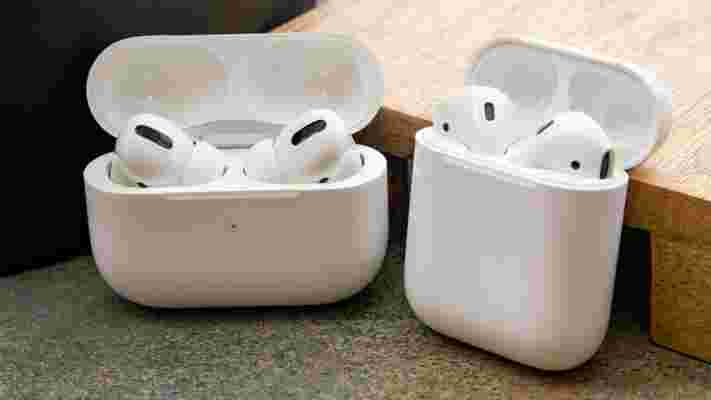
Difference #1: The AirPods Pro have noise cancellation
The most noticeable difference between the two earbuds is that the AirPods Pro use active noise cancellation rather than relying only on passive noise reduction.
The level of noise cancellation with the Pro buds can be customized and even set to 'Transparency Mode', which allows you to hear what's happening around you without taking the headphones out of your ears.
Unfortunately, the regular AirPods don't offer any level of active noise cancellation. Instead, there's a noise reduction effect thanks to the seal they create within your ear canal. However, this effect is negligible because they don't have silicone or memory foam ear tips.
Difference #2: The AirPods Pro are water-resistant
If you want to take your Apple earbuds to the gym, go with the more expensive AirPods Pro. They have an IPX4 rating, which means they're sweat- and water-resistant compared to the non-water-resistant AirPods.
Now, that doesn't mean you should take your new high-end AirPods Pro in the pool with you – if they fall out or stay submerged for too long, they'll get ruined. If you're looking for something you can take into the pool, you'll need a pair of the best swimming headphones instead.
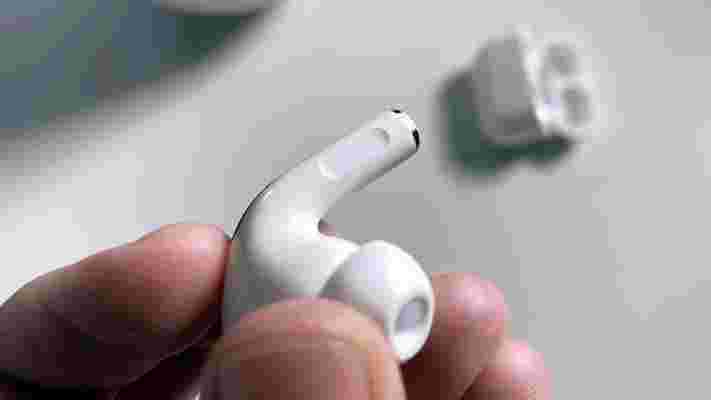
Difference #3: The AirPods Pro have custom eartips
For the perfect fit, the AirPods Pro will offer more customization than the one-size-fits-all Apple AirPods. Inside the box, you’ll find several ear tips, and if you’re not sure which to use, Apple will even help you find the correct fit with a quick audio test and tailor the sound to suit your ear structure.
Because the ear tips on the AirPods are plastic, you’re stuck with them – although some people find them more comfortable than silicone ear tips, which you need to push into your ear.
Difference #4: AirPods Pro have a pressure valve inside
If you’ve ever felt uncomfortable when wearing a pair of in-ear headphones, it might be because there’s a small, annoying-but-not-life-threatening pressure build-up inside your ear. To combat that, the AirPods Pro uses a tiny pressure valve to reduce the pressure inside your ear – a feature Apple borrowed from the Powerbeats Pro .
It’s a small perk of the Pro series of headphones, but one worth considering, especially if you’re sensitive to pressure build-up.
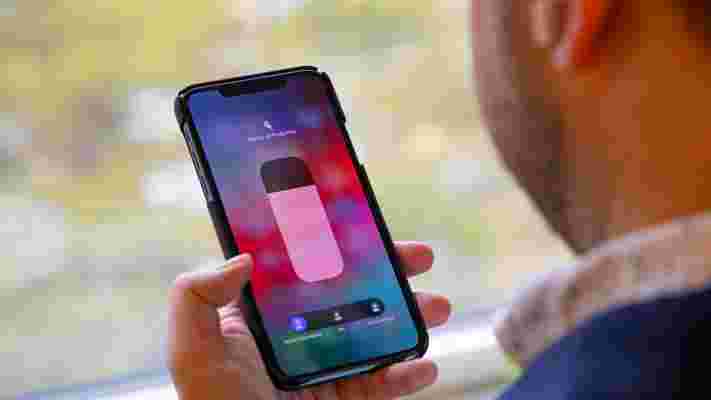
Difference #5: The AirPods Pro have Adaptive EQ
Inside the earbuds themselves, there are internal microphones that can measure volume. These are crucial for effective noise cancellation but, as a bonus, can also be used for features like Adaptive EQ that optimizes sound quality for your physiology.
How does it work? According to Apple, the AirPods Pro “automatically tunes the low- and mid-frequencies” using a custom high dynamic range amplifier that “produces pure, incredibly clear sound while also extending battery life.” Nifty!
Difference #6: ...and offer wider soundstage and a slight uptick in clarity
While you won’t find a massive difference in audio performance between the two AirPods, many folks have noticed a slightly wider soundstage (how clearly you can hear individual instruments) and a slight uptick in overall clarity when using the AirPods Pro. That’s likely because the AirPods Pro buds have a slightly larger frequency range and a somewhat larger chamber that allows the sound to expand more.
Difference #7: The AirPods Pro are shorter and stouter than the AirPods
This is more of an aesthetic difference than a functional one, but the AirPods Pro are a bit shorter and stouter than the regular AirPods. The iconic tips of the headphones don’t reach as far down your ear as the Pro, but they will cover up more of your ear due to their larger housing.
However, both have a somewhat futuristic look to them, which some find unappealing – and plenty of others love. Either way, both models are unmistakably ‘Apple’.
Difference #8: The AirPods Pro are way, way more expensive
Finally, a category where the regular AirPods stand a chance: At $249 / £249 / AU$399, the AirPods Pro are significantly more expensive than the regular AirPods.
Since the AirPods 3 launched, the second generation of the Apple AirPods have had a permanent price drop and now cost $129 / £119 / AU$219.
They previously cost $159 / £159 / AU$249 with the standard charging case and $199 / £199 / AU$319 with the Wireless Charging Case bundled in. You can still buy the Wireless Charging Case separately for $79 / £79 / AU$129.
If you want to swap out the regular case for the wireless charging case, the price of the regular AirPods jumps to $199 / £199 / AU$319, putting it within arm's reach of the AirPods Pro.
These prices regularly dip, however – particularly for the regular AirPods. You can check out the best AirPods and AirPods Pro deals we've found in your region below:
Difference #9: The AirPods Pro support Spatial Audio
The noise-cancelling AirPods Pro got an upgrade with iOS 14, which allowed for Spatial Audio.
The feature works in 5.1, 7.1, and Dolby Atmos, which positions sound all around you within a virtual sphere – that means that if you're watching a Dolby Atmos film that shows a plane flying overhead, it will sound as though the plane is passing above you.
As well as allowing for clever virtual Dolby Atmos, the AirPods Pro can track the motion of your head and your device to ensure that the audio always appears to originate from the correct position.
Read our Spatial Audio guide and Dolby Atmos guide to find out more about these advances in audio tech.
Difference #10: The AirPods Pro come with Conversation Boost
Conversation Boost is designed to help you hear conversations more clearly when speaking to people face-to-face.
When the feature is enabled, the microphones on the AirPods Pro work to isolate voices above other environmental sounds. You can adjust the levels of amplification, transparency, and tone of what you hear.
Apple introduced the feature alongside iOS 15, and your device will need to be running this firmware for it to work. To turn Conversation Boost on, open Settings > Accessibility and tap Audio/Visual under the Hearing section. Then turn Headphones Accommodations on and turn Transparency Mode on. Finally, scroll down to Conversation Boost and turn it on.
Apple AirPods vs AirPods Pro: Are there any similarities?
We’ve focused on the differences so far, but the two true wireless earbuds have tons in common.
They’re both true wireless earbuds with similarly sized cases and a battery life of around 3.5 hours per charge and over 24 hours with the battery case.
They also have a reasonably similar sound quality with only minor differences in the soundstage/clarity – until you turn on Spatial Audio. They both use the new Apple H1 Wireless chip that enables hands-free “Hey Siri” functionality, work seamlessly with iOS, and are integrated with Apple’s Find My network.
Apple AirPods vs AirPods Pro: Which AirPods should you buy?
If you’re bothered by outside noises while at work or while commuting, need water resistance for the gym, or are sensitive to pressure build-up in your ears, it’s probably worth paying a bit more for the Apple AirPods Pro.
But if your chief concerns are sound quality or battery life, you can save yourself a ton of money by sticking with the basic AirPods.
Or, if you’re looking for a happy medium between the two models, read our Apple AirPods 3 review .
Epic Games creates new studio to push ‘the boundaries of graphics’ and Unreal Engine 5 to its limits
Epic Games is creating a new studio to make "original standalone experiences” that aim to “push the boundaries of graphics and game development forward”, according to an official blog post .
The new studio is comprised of developers from Plastic, a small team that’s best known for creating experimental, self-contained demos that showcase novel ideas and development techniques.
There are no details on what the team’s new projects under Epic will be, or what makes them “experiences” over traditional games.
The blog post does, however, point to several job listings for the new studio, including a technical animator, UI programmer, senior engine programmer, GPU programmer, and producer.
The job descriptions emphasize Plastic’s experience in creating graphically ambitious games by embracing “the bleeding edge of technological advances”, and requests candidates who are willing to “push Unreal Engine 5 to its limits” .
Plastic’s past games have included the platformer Bound, adventure game Datura, and self-styled interactive digital art experiment Linger in Shadows.
“They are an incredible group of talent who have created genre-defining experiences that sit on the bleeding edge of technological advances, pushing hardware to the limits in a beautifully artistic way,” Hector Sanchez, Head of Epic Games, said about Plastic.
Analysis: lots of pretty pictures

The framing of Epic’s announcement suggests the new studio will focus on creating games that are first and foremost graphically impressive. The roster of job openings, their emphasis on technically-inclined candidates, and the explicit ambition to break new ground with Unreal Engine give the impression the studio will be spending more time experimenting with Epic’s in-house technology than crafting entertaining games for players.
Of course, it won’t actually be creating games at all, but “experiences”. While the meaning of the term is unclear - and has likely been left so - it’s strikingly similar to the terminology Epic used last year in its title of The Matrix Awakens: An Unreal Engine 5 Experience. That wasn’t so much a game as it was a tech demo that showcased the most ambitious and cutting-edge features of Unreal Engine 5 to stir up excitement around the platform.
This new studio could be doing something similar, and the emphasis on technological advancement through standalone releases certainly lends weight to the idea. How closely their experiences will resemble the Matrix tie-in remains to be seen, however. Plastic may place themselves in the demoscene, but they’re also a game developer.
We might expect to see the first fruits of their work later this year. Although released in early access in the middle of 2021, Unreal Engine 5 is expected to fully launch sometime in the next 12 months. What better way for the new studio to strut its stuff than with an impressive ‘experience’ to accompany the launch.
I don't care if gaming chairs suck, I'm not buying a Herman Miller
If you ask for any recommendations online when looking for a new gaming chair , chances are you’ll be told at least once that all ‘racing’ style chairs (named such as they resemble the bucket-style seats found in racing cars) are hot garbage and that instead, you should buy yourself a Herman Miller .
These highly coveted, luxury office chairs have gained a cult following thanks to their true ergonomic design, and despite having an asking price that would make anyone's eyes water, people seem more than happy to bend over backward in order to procure one, from saving for as long as required to hunting down second-hand models.
They’re certainly impressive, and the love they get is far from undeserved, but they have one glaring issue that means I’ll likely never buy one - they’re hideous. I’m irked that many of the calls asking for help selecting a chair usually also namedrop popular models used by the gaming community such as Secretlab, which could be a better indication of what they’re actually looking for.
Sometimes, people really do want style over substance, and particularly with younger folk, there’s less of a need for the level of ergonomics found in Herman Miller products. There are plenty of available options on either side of this fence, with garish, gamer aesthetics and stuffy, professional-looking chairs both appealing to different demographics, so we're hardly lacking in choice regardless of what you're looking for.
Spending money on ugly furniture isn't it
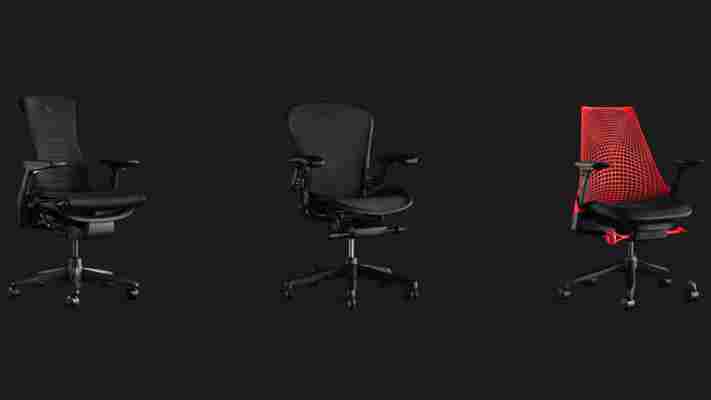
I’ve had the pleasure of testing a fair few gaming chairs in my time, and I’ve never had any issues with my back even after sitting in them for around 12 hours a day (thanks to the pandemic, my work desk is also my gaming space). This is very unhealthy of course, but it without a doubt tested how comfortable these chairs are for long periods of use and I’ve rarely found them to be unfit for purpose, especially as many brands also claim to have an ergonomic design.
I should point out that I’m an overweight 28-year-old, so I do sit somewhere between the age demographics for both styles of chair, perhaps leaning closer towards the colorful, punchy designs loved by the younger demographic than the need for enhanced back support proffered by those over 35. And I’m by no means saying that Herman Miller is inferior - in fact, I’d argue that people pushing the health benefits to its design are correct, and if you suffer from a bad back or have a few extra years behind you then they’re a fantastic purchase.
I also do believe the claims from people that they can find some racing style chairs to not offer enough back support, or at least that they’re inferior to what Herman Miller can offer, though I have a great deal of skepticism about how many people on social media are just parroting what other people are saying, without having gained their own experiences. The way some people talk about racing-style gaming chairs, you’d think they’re made from broken glass and Lego, destined to leave your back in a worse state than Batman's after a run-in with Bane.
Not everyone needs to care about top-line ergonomics the minute they start getting involved with gaming, especially as for most youngsters a gaming chair is an expensive purchase for a setup. Spending up to thousands of dollars on a chair to get…well, something that looks like it came out of an IKEA flat pack would certainly leave me feeling a little deflated.
All a matter of personal preference
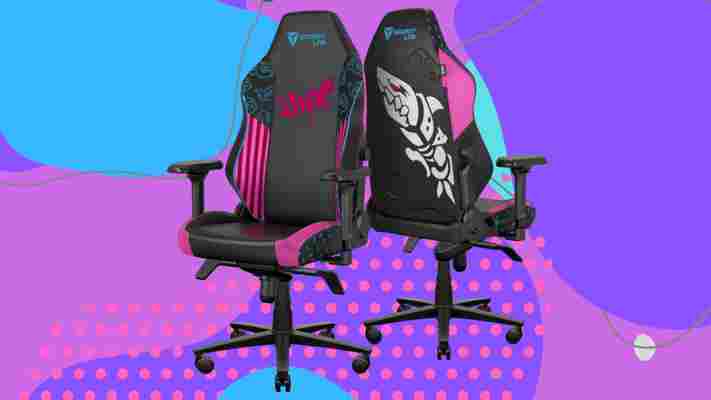
A lot of people take pride in their gaming space and how they decorate their environment. You only need to take a look at spaces like YouTube and TikTok to see people talking about how to theme their peripherals together, what desktop accessories to buy to add some extra pizazz, and occasionally, what products match their favorite games or shows. With folks on social media showing such a love for color-coordinating their spaces, I greatly appreciate the resulting market demand to have products in shades other than black, white and grey.
This is a space where other brands excel, with Secret Lab offering designs styled after things like The Witcher or CyberPunk 2077 , and AndaSeat releasing a series of Marvel-themed products, such as this fun Spider-Man model . Razer has also developed its own chair lines in recent years, featuring awesome snake-inspired designs and a pink variant to match its Pink Quartz line of peripherals and gaming gear.
Place those funky chairs next to what Herman Miller is offering and it’s no contest for me. Even the Herman Miller ‘gaming’ chairs suffer from a case of the uglies, looking no better aesthetically than the rest of its product catalog, and despite my weight, I’m in good enough health to not worry about my back, so the only selling point (as far as I’m concerned) that makes them worth the outrageous asking price has no sway for me.
If Herman Miller released another line of gaming chairs to appeal to a younger demographics then I may have a newfound interest on dropping a small mountain of cash on one, but for now, I’m sitting in blissful comfort in what some would warn you is a terrible, uncomfortable racing style seat.
If you’re young and in good health, just pick something that you like the look of that’s within your budget, provided it has decent reviews and won’t fall apart. As The Dude would tell you, it’ll “really tie the room together”.